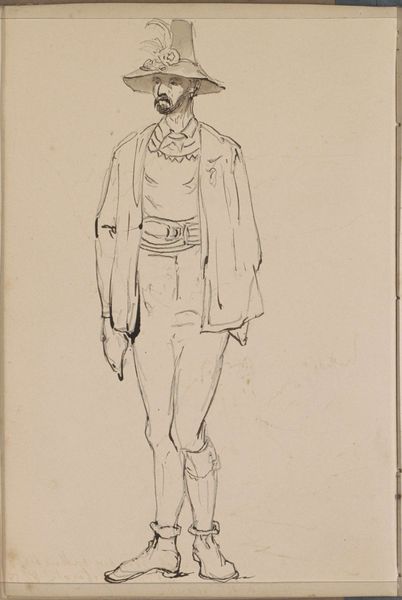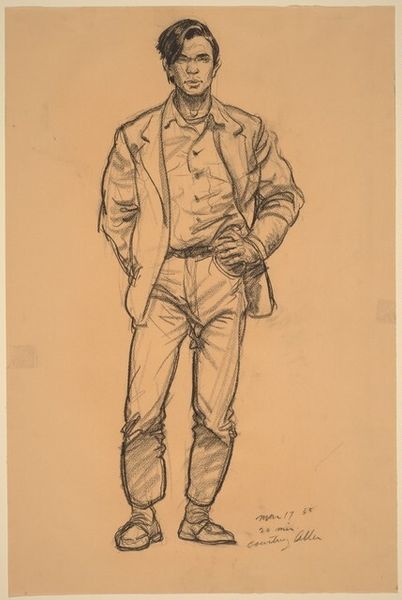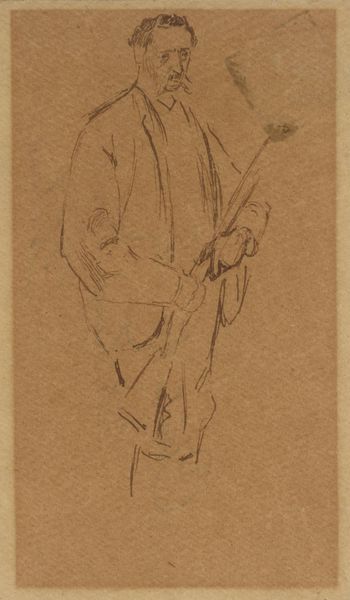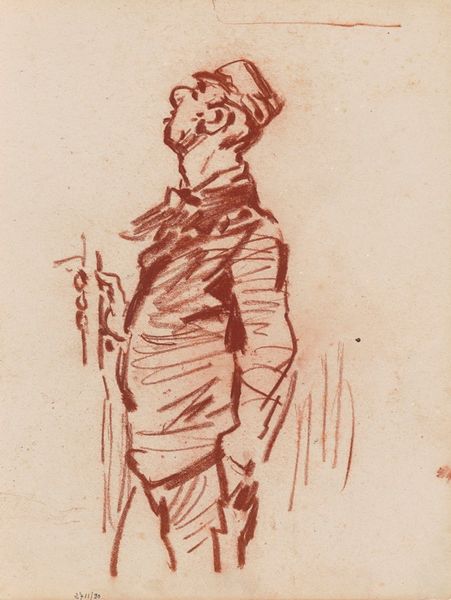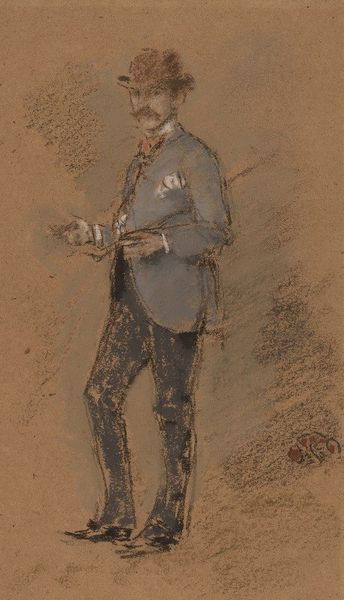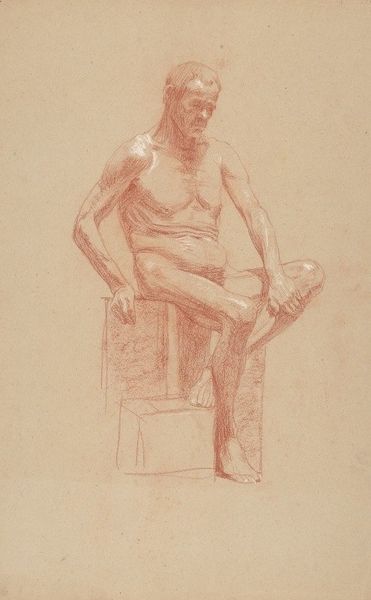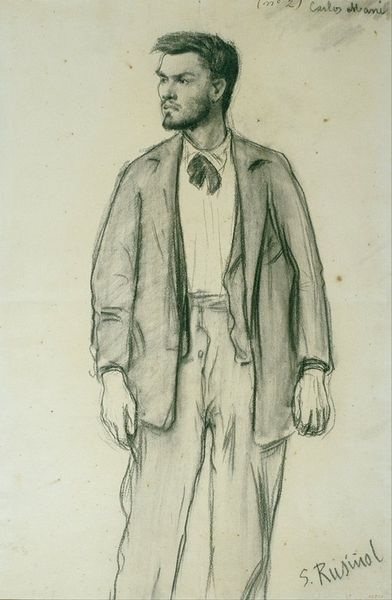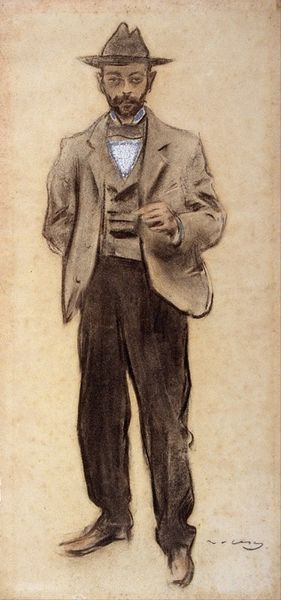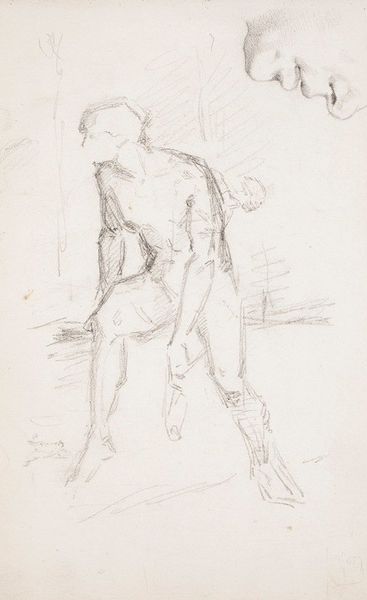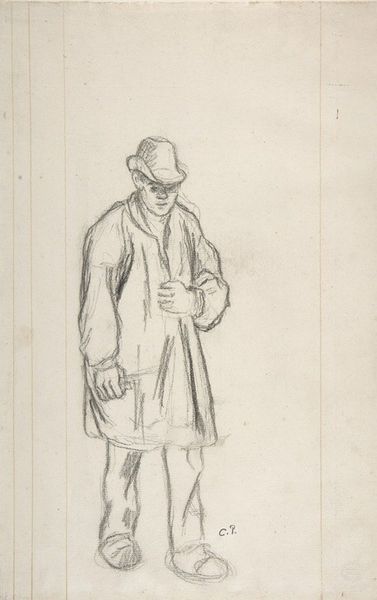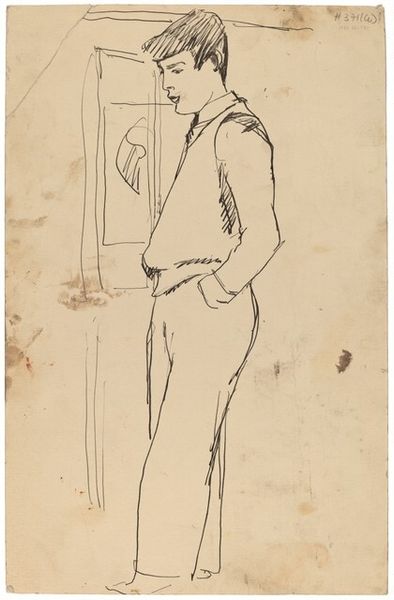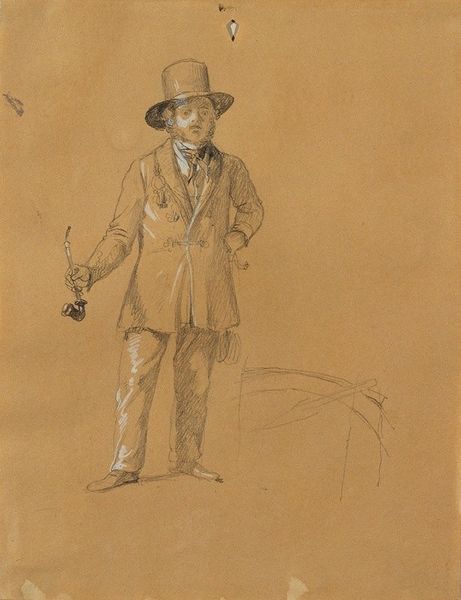
drawing, painting, watercolor
#
portrait
#
drawing
#
painting
#
pencil sketch
#
charcoal drawing
#
figuration
#
watercolor
#
pencil drawing
#
expressionism
#
line
#
portrait drawing
#
modernism
#
watercolor
Copyright: Public Domain: Artvee
Curator: Looking at this arresting work on paper, I am struck by the vulnerability captured in what seems to be a portrait, sketched with bold expressive lines. Editor: Indeed, what we see before us is a watercolor drawing by Egon Schiele, a portrayal of Franz Weigang. Schiele has primarily used watercolor, pencil and charcoal to construct a highly expressive likeness of Weigang. Curator: The color palette is really restrained, focusing on ochres and browns, lending a certain solemnity to the image. Note also the stark lines that define the figure, bordering on caricature. The absence of precise detail makes Weigang almost appear transparent. Editor: Schiele created many portraits, capturing not just likenesses, but also the inner turmoil and psychological states of his sitters and his immediate circle. He himself struggled with authority and found an artistic outlet challenging accepted norms. Weigang, wearing a stylish hat, might be someone in his circle. His clothing indicates an air of formality and sophistication. Yet the downward glance creates the air of one trying to not be seen, and therefore, somewhat subversive and mysterious. Curator: Agreed. There is an undeniable emotional weight in the work, typical of Schiele’s expressionist style. The thin, translucent washes, and nervous lines heighten the subject’s unease, speaking to themes of vulnerability. Editor: It’s tempting to see this as a commentary on societal pressures. Schiele’s portraits often highlighted a certain discord, revealing how individuals exist and function under public scrutiny and expectations. They show modern man as conflicted and self-conscious. Curator: The use of line and the strategic blurring—the lack of sharp edges—invite one to ponder this tension you've articulated between individual expression and external expectations. Weigang's physical form almost dissolves into the background. Editor: Indeed, these early modernist depictions provided a lens to view evolving societal norms. I leave contemplating this striking portrait and how such raw emotion and vulnerability found its place on these fragile sheets. Curator: A fitting reflection. Through its stark lines and psychological charge, we gain an insight into how early Modernism gave form to new emotional realities, making it profoundly resonate with viewers.
Comments
No comments
Be the first to comment and join the conversation on the ultimate creative platform.
